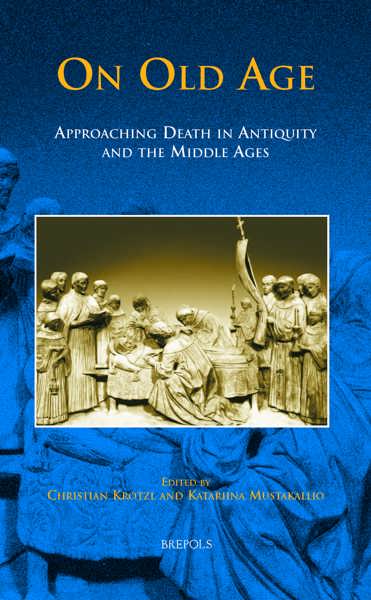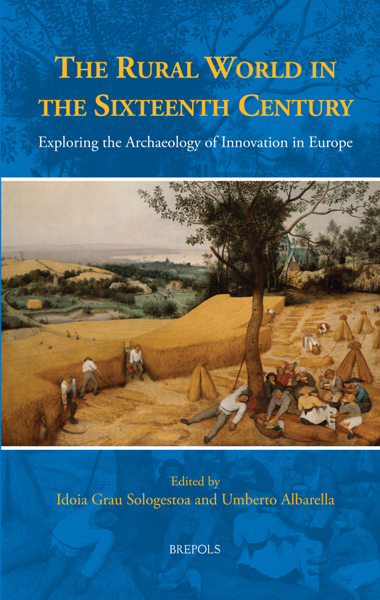
Material Exchanges in Medieval and Early Modern Europe
Archaeological Perspectives
Magdalena E. Naum, Jette Linaa, Sergio Escribano-Ruiz (eds)
- Pages: 264 p.
- Size:156 x 234 mm
- Illustrations:26 b/w, 17 col., 2 tables b/w., 15 maps b/w
- Language(s):English
- Publication Year:2021
- € 75,00 EXCL. VAT RETAIL PRICE
- ISBN: 978-2-503-59399-9
- Hardback
- Available
- € 75,00 EXCL. VAT RETAIL PRICE
- ISBN: 978-2-503-59400-2
- E-book
- Available
“(…) the volume presents a rich picture of medieval and early modern European material culture, revealing the multitude of journeys taken by objects and the transformative nature of their presence in various local contexts. It will appeal to students and scholars working both within the field of archaeology and in other adjacent disciplines such as history and material culture studies.” (Rachel Winchcombe, in The Medieval Review, 22.10.02)
“There is real merit in demonstrating that there is flexibility in the archaeological analysis of how social life is constituted through material culture.” (Georgina Pitt, in Parergon, 39/2, 2022, p. 183)
Dr Magdalena Naum is an associate professor at the Department of Archaeology and Heritage Studies, Aarhus University. Her research focuses on migration, Scandinavian colonialism and cultures of collecting. She co-edited Scandinavian Colonialism and the Rise of Modernity (Springer, 2013) and Facing Otherness in Early Modern Sweden (Boydell 2019), and authored numerous articles on the subject of her research.
Dr Jette Linaa is curator of historical archaeology at Moesgaard Museum and adjunct assoc. prof. at Department of Arhaeology and Cultural Studies, University of Aarhus. Linaa is the author of several volume and papers on Early Modern consumption, as well as editor of an anthology on diasporic communities in Early Modern Scandinavia
Dr. Sergio Escribano –Ruiz is part-time Professor and Post-Doctoral Fellow at the University of the Basque Country (UPV/EHU). He has carried out research across Europe (Spain, Italy), America (Canada, Argentina) and Africa (Sahara), studying several topics ranging from historical pottery and settlements to colonialism. Escribano-Ruiz is has authored several papers on such topics and is actively engaged in related international associations.
The study of the movement of ‘things’ — the exchange of objects as gifts or through trade, the itineraries that they followed when on the move, and their changing importance from location to location — can offer unique insights into our understanding of past societies; and archaeology plays a vital role in allowing such movements to be traced. Nonetheless the circulation of objects across time, and between peoples and places, has long been neglected as a field of research in its own right. This volume aims to address this gap in scholarship by drawing on recent archaeological research to provide a detailed study of the moment of objects across Europe in the late medieval and early modern period. The contributions gathered here trace the interactions between peoples, ideas, and objects in order to explore the impact of movement both on the material things themselves, and on the people who manufactured, exchanged, or used such goods. The volume draws on a wide range of archaeological evidence to explore subjects as varied as production and transport, modes of trade, the connections between trade and religion, and the emotional connections between things and people. Together, they offer a pioneering approach to our understanding of objects and their movement in the past.
List of Illustrations
Introduction — SERGIO ESCRIBANO-RUIZ, MAGDALENA E. NAUM, JETTE LINAA
The Same, but Different: Reflections on Some Medieval Stoneware Vessels Found in Norway — VOLKER DEMUTH
On How to Keep the Monopoly of Diversity: Itineraries of Foreign Pottery in the Basque Country, AD 1300–1700 — SERGIO ESCRIBANO-RUIZ
Memorable, Modern or Mundane? Investigating the Place of Porcelain and Majolica in the Homes and the Hearts in Early Modern Denmark — JETTE LINAA
A Mandatory Stop: The Trade of Imported Pottery in Asturias (NW Iberian Peninsula) during the Early Modern Period — MIGUEL BUSTO ZAPICO
Pilgrim Badges and the Magical Middle Ages: Aspects of the Cult of Saints, Magical Thinking, and Religious Identity — RACHEL FACIUS ANDERSEN
Producers, Intermediaries, and Consumers: The Role of Adriatic Ports in the Venetian Glass Trade — SAMANTHA GARWOOD
Clothing Cultures in the Seventeenth-Century Polish-Lithuanian Commonwealth: The Male Footwear from Elbląg as an Example of Western-Type Fashion — ALEKSANDRA KULESZ
Kilian Stobæus and his Fossil Collections: Science, Aesthetics, and Emotions — MAGDALENA E. NAUM, CAJSA SJÖBERG, HÅKAN HÅKANSSON, ANDERS LINDSKOG, MATS E. ERIKSSON AND PER AHLBERG




